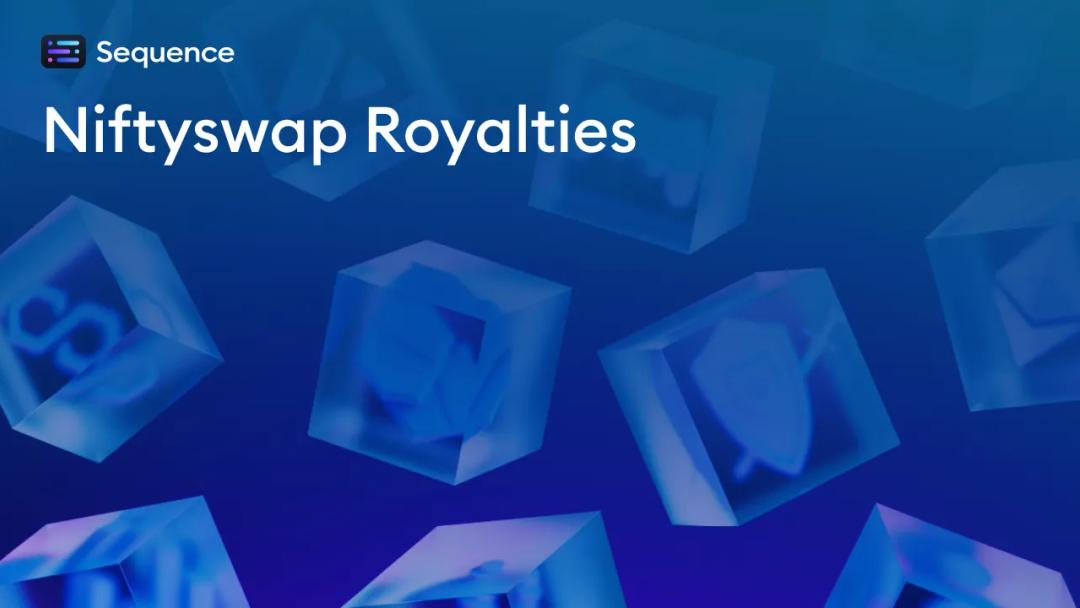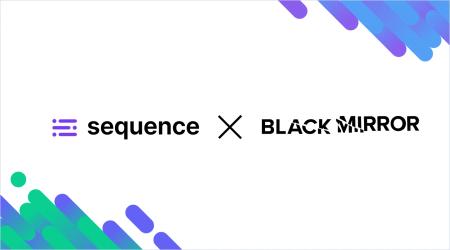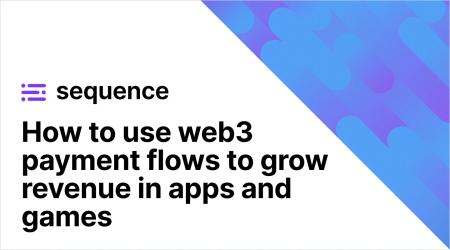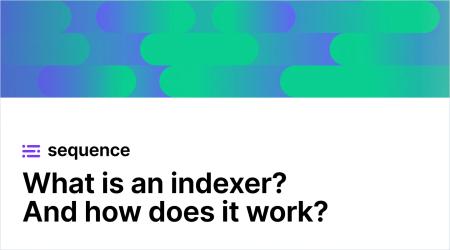Creator royalties are essential to web3 innovation and sustainability
December 22 2022

Royalties that reward creators for secondary sales of non-fungible tokens (NFTs) and semi-fungible tokens (SFTs) have emerged as a transformative payment model that lays the foundation for a vibrant, equitable, and sustainable digital collectibles economy.
Creator royalties open a window to a disintermediated world of possibilities and catalyze innovation across the spectrum of web3 gaming and collectible assets.
At Horizon, we view royalties as a new paradigm that is core to capturing the value creators provide, and to incentivizing a continued commitment to building in web3.
However, a shift away from enforcing royalties by certain industry participants has translated to newly empowered creators being bypassed entirely in secondary transactions — a development that has come into sharp focus with the launch of Uniswap’s NFT aggregator.
To understand more about creator royalties and the role they play in cultivating a resilient digital collectibles economy, let’s look at how the model works, how it is being circumvented by industry players such as Uniswap, and how Niftyswap protects this important stream of revenue for web3 builders.
How creator royalties work
Creator royalties are a cornerstone web3 innovation that provides recurring earnings to original creators each time an NFT or SFT changes hands in secondary sales. Royalties are typically perpetual and set at 2–10% of a sale.
The ERC-721 NFT and ERC-1155 SFT standards allow for royalties and creators’ wallet addresses to be written into the smart contract code, as does the ERC-2981 standard.
However, because NFT and SFT smart contracts do not natively support enforcement, creators depend on third-party platforms to execute royalty payments. This is because smart contract mechanisms do not distinguish transfers linked to sale transactions from when collectors transfer NFTs between their own wallets.
As royalties are unable to be enforced on-chain, and a standard technical solution has not been adopted across marketplaces, platforms have applied siloed off-chain systems to enforce royalties. The result is a fragmented approach to royalties enforcement that lacks cross-market interoperability.
Value flow to creators
NFT and SFT royalties have been embraced by creators as a profoundly impactful step change, fulfilling the role of a payments stream linked to creator rights that the web2 Internet neglected to build.
The model has shifted the balance of power away from web2 intermediaries with outsized control over distribution back toward creators, ushering in an era of autonomy and experimentation underpinned by new residual revenue.
Beneficiaries have included artists, startups, game publishers, and traditional brands alike, with close to $2 billion in royalties paid out to creators in the 12 months since OpenSea began displaying royalty amounts in October 2021.
Royalties have enabled creators to make renewed investments in driving innovation, adopting novel technologies, and pioneering original mechanisms to redefine web3 experiences, compounding advancements in the digital ownership space.
The creator royalties divide
The rise of a zero-royalty marketplace model to cater to price-sensitive traders and a subsequent opt-in royalty marketplace model that makes royalty fee payments optional for traders has led to a significant decline in creator royalty payouts.
The move away from industry-wide enforcement has resulted in an increasingly haphazard stance on what was already a piecemeal approach toward creator royalties, with a number of marketplaces electing to shun royalties only to reinstate them after community backlash.
Uniswap’s entry into the space as an aggregator of marketplaces that forgo royalty requirements as the default is an attempt to have it both ways: to appear with impunity as a neutral entity, but in reality, standing at odds with the interests of the creator community.
The ideological tenet of zero-royalty marketplaces equates to an apparent disregard for the ownership rights of digital asset creators, who are not perceived as deserving to benefit from their work beyond the initial mint.
The current state of the market not only lacks cohesion but also perspective around creators building the foundations for long-term value for marketplaces and traders — indeed creators are the reason for marketplaces to exist in the first place.
The industry divide raises the question as to how much should be left to the market and how much should be left to a single royalty-payment standard.
Why creator royalties matter
Removing or reducing royalties is antithetical to the web3 ethos of advancing digital ownership rights and value accrual for creators, and is economically short-sighted.
Surrendering creator royalties could precipitate a major contraction in a dynamic new industry that is poised to disrupt and revolutionize traditional industries like art, gaming, and collectibles.
Creators do not exist in isolation from the rest of the web3 ecosystem. When a user discovers an NFT or SFT, they are also discovering an artist, a web3 game, an app, or a community. This provides a context in which to engage with the web3 economy, either in a small way, as a collector or a player, or in a more significant capacity, as an investor or as someone embarking on a career in the industry.
Royalties are key to a healthy creator economy and the wider ecosystem, to the expansion of web3 games and apps, to building more complex and interesting use cases, and to jumpstarting disruptive innovation.
It is in the interests of marketplaces to nurture a vibrant web3 builder community that is secure enough to take risks and iterate toward the kind of compelling applications that accelerate mainstream adoption.
How creator royalties are configured in Niftyswap
At Horizon, we’re creators ourselves, having developed the web3 game Skyweaver; the Sequence all-in-one web3 developer platform and smart wallet; the Niftyswap marketplace for SFTs; and, the ERC-1155 SFT standard.
We’ve experienced the benefits of SFT royalty payments with Skyweaver, and we’re committed to putting the power of this model into other creators’ hands.
As web3 builders, we believe that fellow creators deserve the equality of opportunity inherent in web3, which is why we’ve hardcoded creator royalties enforcement into the Niftyswap protocol.
Niftyswap enforces royalties directly at the smart contract level in a fully decentralized manner via the ERC-2981 open royalty payment standard. Niftyswap also makes it possible for NFT and SFT smart contracts that have not implemented EIP-2981 to enforce royalty payments via manual configuration.
This was a product design decision taken at the outset from which we’ve never wavered — a digital collectible marketplace built in solidarity for creators by creators, with royalties seamlessly enforced through trustless architecture. Creators are the ones defining what their business model is, not us.
How creators can benefit from Niftyswap enforcing royalties on arbitrage activity
Niftyswap creates a unique opportunity for creators that deposit their SFTs with USDC, wETH, or any other ERC-20 token in exchange for liquidity provider (LP) shares. These creators can leverage royalties enforcement on arbitrage taking place on Niftyswap to synchronously benefit from transaction fees and royalty payments.
Arbitrage can be simply described as a strategy where investors buy an asset on one exchange, and then simultaneously sell it on another exchange for a higher price.
Opportunities for arbitrage abound in open web3 economies and the inconsistent application of creator royalties across digital collectibles marketplaces further amplifies SFT price discrepancies.
Arbitrageurs — typically arbitrage bots — can simultaneously trade in two markets to capture these price differences as Niftyswap enables instant counterparty transactions through its automatic market maker (AMM) liquidity pools.
Creators who add SFT/ERC-20 token pairs to Niftyswap liquidity pools can benefit from arbitrageurs trading by earning a portion of transaction fees, and by receiving payments triggered by Niftyswap enforcing creator royalties on SFT sales.
Deepening SFT liquidity on Niftyswap provides greater scope for arbitrage and therefore increased trading volume, which can, in turn, generate higher returns in both fees and enforced royalty payouts for creators. Even if creators themselves do not provide liquidity, but rather their community does so, they will still reap the benefits of royalty payments from arbitrage volume involving Niftyswap.
Conclusion
The web3 space is known for re-imagining boundaries. NFT and SFT royalties offer creators an unprecedented opportunity to innovate toward deeper, richer web3 experiences and we’re proud to protect royalties for web3 builders at the protocol level in Niftyswap.
Learn all about the Niftyswap Marketplace SDK and low-code white-label marketplace, and how developers can build their own in-game/in-app marketplaces over at Sequence!
Sequence makes building onchain simple. Developers and teams can launch, grow, and monetize apps with unified wallets, 1-click cross-chain transactions, and real-time data, all in a modular and secure stack. No more stitching together fragmented tools or battling poor user flows. Sequence is production-ready infrastructure that helps teams ship faster, onboard more users, and scale confidently. From chains and stablecoins to DeFi and gaming, Sequence powers developers and applications across the EVM ecosystem with billions in transaction volume and millions of users. Trusted by leaders in blockchain, Sequence powers today’s onchain apps and delivers future-proof infrastructure for tomorrow’s breakthroughs. Learn more at sequence.xyz.
Written by

Robert Guenette
Product Marketing DirectorRelated Posts

A short guide that explains exactly what gasless transactions are, and why they matter for your web3 experience.

In partnership with KOR Protocol, Sequence and Msquared, Black Mirror's franchise has launched the $MIRROR token and a new web3 experience!

Web3 payment flows allow any app to embed onchain purchases and interactions in a way that feels natural for users. Learn more about them!

As more applications and protocols move onchain, indexers redefine how dev teams access, organize, and use blockchain data. Learn how!



